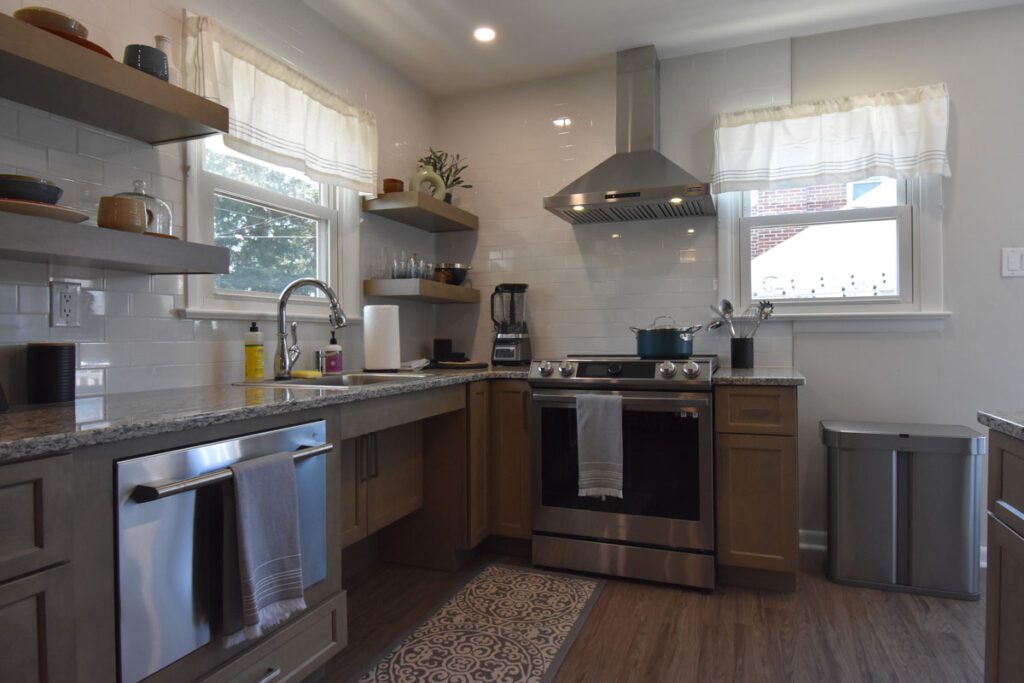What is KenCrest’s Enabling Technology Program?

KenCrest's Enabling Technology—otherwise known as Assistive Technology—supports people with intellectual and developmental disabilities gain independence in their daily lives.
By Sydney Kerelo
Since February 2020, KenCrest's Enabling Technology department has connected people with disabilities in Pennsylvania to various assistive technology and devices that help them achieve a more self-sufficient lifestyle.
“Often known as assistive technology, Enabling Technology describes a diverse range of devices that promote access and independence across a person’s day,” says Gregg Kelinson, the Assistant Vice President of Innovation.
According to Kelinson, KenCrest uses different levels of technology to help the people we support, ranging from voice assistants to chair lifts. Our off-the-shelf items include voice assistants like Alexa or Google Dot, video doorbells, and tablet—or phone-based applications. The department also uses intelligent home tech, including smart bulbs, medication dispensers, and oven timers, to help individuals with disabilities live more independently.
"One individual at KenCrest was struggling to get up and out the door in the mornings by a certain time, and the technology solution we came up with was twofold,” says Kelinson. “Besides an alarm clock, a pressure mat was used in her bed. If there was still weight on the pressure mat at 7 a.m., an alert would go off, and a remote employee would then call them to make sure she got up and out of bed.
“Then, to be sure she left for work on time, a sensor was placed on the front door that, if not triggered by 8 a.m., it would send an alert to a remote staff who could then act and help her get to work,” adds Kelinson.
Having customized support like the pressure mat and the front door sensor allows the individual to be independent while remaining accountable. It enables that individual to live on their own while still getting extra help with challenging tasks.
A few of the other people we support utilize technologies like smart switches that connect to a smartphone app and can turn on and off a home's lights. Many use timed medicine dispensers, adapted styluses, and even induction stoves to make everyday life easier.
Other supports, like the Razier Lift chair, limit risks when helping someone with disabilities get into a standing or sitting position. Or the Amazon Astro, a household robot that uses Amazon Alexa technology and intelligent motion to monitor the home.
However, before assigning someone with a new assistive technology, the department must ensure that the tech will achieve that person's outcome.
"You always start by looking into that person's goals person's they want to achieve from using technology," Kelinson says. "In looking at their goals, assistive technologies are identified for a possible fit or intervention to help them meet their goal. The intervention is always combined with a person-centered assessment identifying the individual's needs, abilities, and preferences. This practice involves the care team and the individual for input and information. All this typically occurs within the individual's plan where the goal is to be accomplished."
Tech success stories start with understanding a wish, dream, or desire of what a person with disabilities wants to accomplish. It can be as simple as wanting to remember an appointment, but no matter the goal, KenCrest's Enabling Technology department helps make those dreams possible.

As an agency, KenCrest is committed to being "Tech First," and we always consider technology as a solution to support outcomes. But Tech First means more than just utilizing technology; it's a potential support, not a replacement for staff. Employees must be open to changes and understand how adopting technology as a natural support provides choice, increases independence and self-esteem, and promotes empowerment for all.
Tech First is a commitment to innovation and a willingness to think creatively and differently. More than 20 states have Tech First Shift accreditations, including Pennsylvania, Delaware, and Connecticut, and KenCrest is the second organization in PA to be awarded the accreditation.
Recently, KenCrest took its desire for innovation a step further by opening the first Smarter Living home—a charming, ranch-style house that was initially used as a group home but has since been remodeled into a model home outfitted with a slew of Enabling Technology devices that help those with disabilities live more independent. Throughout the house, everything is ADA-compliant, including the height of the kitchen counters, open kitchen shelves, and wider walkways. Several assistive technology devices, such as Amazon Alexa-configured devices and care tablets that provide health monitoring, are available.
The Smarter Living home is even the home of KenCrest's Lending Library funded by a Truist Foundation grant, allowing people we support to borrow technology and test their capabilities. Currently, the home exposes individuals to technology by allowing them to explore the house and the tech and decide if it's the right fit.
Enabling Technology, or Assistive Technologies, creates opportunities for people to engage in their community with greater confidence and a sense of belonging—a philosophy that KenCrest practices daily.






